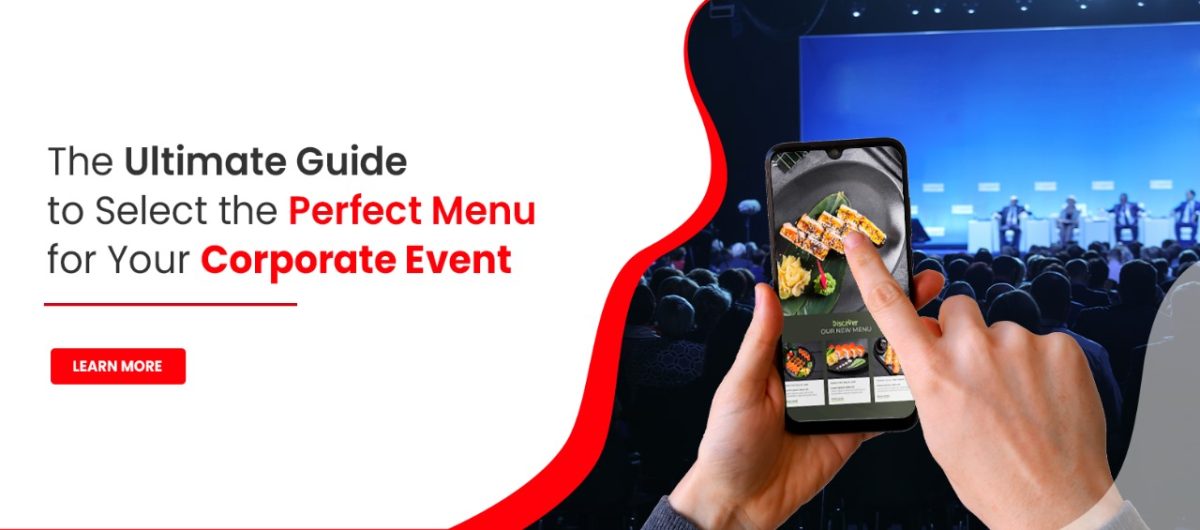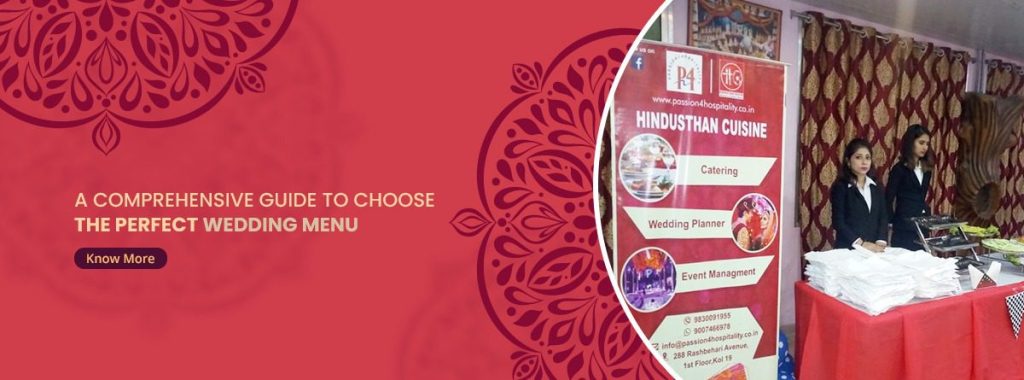Corporate events are a great way to showcase your brand, network with potential clients, celebrate your achievements and motivate your employees. However, planning a successful corporate event can be challenging, especially when it comes to choose the right menu. The food you serve can make or break your event, as it can affect the mood, energy and satisfaction of your attendees. Therefore, you need to select a menu that suits your event theme, budget and audience preferences.
In this guide, we will share some tips and best practices on how to select the perfect menu for your corporate event. Whether you are hosting a trade show, a product launch, a team-building event or a conference, you will find some useful ideas and examples to inspire you.
Choose a Theme and Menu Style
Choosing a captivating theme for your corporate event can elevate the entire experience and leave a lasting impression on attendees. A theme can help you create a cohesive and consistent look and feel for your event, as well as guide your menu selection. For example, if you are hosting a tropical-themed event, you can serve exotic fruits, seafood dishes and cocktails with umbrellas. If you are hosting a retro-themed event, you can serve classic comfort foods, soda pop and cupcakes.
Once you have decided on a theme, you need to choose a menu style that matches it. There are different types of menu styles that you can consider for your corporate event, such as:
Plated service: This is where guests are served individual courses at their tables by wait staff. This is a formal and elegant option that allows guests to enjoy their food without interruptions. However, it can also be more expensive and time-consuming than other options.
Buffet service: This is where guests serve themselves from a variety of dishes displayed on a long table. This is an informal and flexible option that allows guests to choose what they want to eat and how much they want to eat. However, it can also create long queues and require more space and equipment than other options.
Cocktail reception: This is where guests mingle and enjoy bite-sized appetizers and drinks served by wait staff or displayed on stations. This is a casual and social option that allows guests to network and interact with each other.
Food stations: This is where guests visit different stations that offer different types of cuisines or dishes. This is a fun and interactive option that allows guests to sample different flavours and customize their plates. However, it can also be more costly and complicated than other options.
Offer a Variety of Options
When selecting a menu for your corporate event, you need to consider the dietary preferences and restrictions of your attendees. You want to make sure that everyone can find something they like and can eat without any issues. Therefore, you need to offer a variety of options that cater to different needs and tastes.
Some of the common dietary preferences and restrictions that you may encounter include:
Vegetarian: This is where people do not eat meat or fish, but may eat eggs and dairy products.
Vegan: This is where people do not eat any animal products or by-products, including meat, fish, eggs, dairy products, honey, gelatin, etc.
Gluten-free: This is where people do not eat any foods that contain gluten, which is a protein found in wheat, barley, rye and some oats.
Lactose-free: This is where people do not eat any foods that contain lactose, which is a sugar found in milk and dairy products.
Kosher: This is where people follow Jewish dietary laws that prohibit the consumption of pork, shellfish, meat and dairy products together, etc.
Allergies: This is where people have adverse reactions to certain foods or ingredients, such as nuts, eggs, soy, seafood, etc.
To accommodate these dietary preferences and restrictions, you need to do the following:
Ask for feedback: Before finalizing your menu selection, you need to ask your attendees for their feedback on their dietary needs. You can do this by sending out surveys or registration forms that include questions about their preferences and restrictions. This will help you estimate how many people require special menus and what kind of menus they need.
Label your dishes: During your event, you need to label your dishes clearly with their names and ingredients. You can also use symbols or colours to indicate which dishes are vegetarian, vegan, gluten-free, lactose-free, halal, kosher or allergen-free. This will help your attendees identify what they can eat and avoid any confusion or mistakes.
Provide alternatives: In addition to your regular menu, you need to provide alternatives that suit different dietary needs. For example, you can offer salads, soups, fruits, vegetables, rice, pasta, tofu, beans, etc. as vegetarian or vegan options. You can also offer gluten-free bread, lactose-free milk, kosher cheese, etc. as alternatives for specific restrictions. You can also have a separate station or table for these alternatives to avoid cross-contamination.
Prioritize Presentation and Visual Appeal
The presentation and visual appeal of your menu can have a significant impact on the perception and enjoyment of your attendees. You want to make sure that your food looks appetizing, inviting and consistent with your theme and brand. Therefore, you need to prioritize the presentation and visual appeal of your menu by following these tips:
Use colours: Permitted organic colours can enhance the appearance and mood of your menu. You can use colours that match your theme or brand or colours that contrast or complement each other. For example, you can use red and green for a festive theme or blue and yellow for a nautical theme. You can also use colours that reflect the flavours or ingredients of your dishes, such as orange for citrus, purple for berries, etc.
Use shapes: Shapes can add interest and variety to your menu. You can use shapes that suit your theme or brand or shapes that create patterns or symmetry. For example, you can use stars for a space theme, or circles for a minimalist theme. You can also use shapes that relate to the types or sizes of your dishes, such as squares for sandwiches, triangles for pizza slices, etc.
Use garnishes: Garnishes can add flavour and flair to your menu. You can use garnishes that enhance the taste or aroma of your dishes or garnishes that decorate or highlight your dishes. For example, you can use herbs for savoury dishes, fruits for sweet dishes, flowers for elegant dishes, etc.
Use props: Props can add context and character to your menu. You can use props that support your theme or brand, or props that create a story or atmosphere. For example, you can use lanterns for a rustic theme or balloons for a festive theme. You can also use props that display or serve your dishes, such as baskets for breads, jars for sauces, etc.
Incorporate Interactive Food Stations
Interactive food stations are a great way to make your menu more fun and engaging for your attendees. Interactive food stations are where guests can participate in the preparation or customization of their food. This can create a memorable and enjoyable experience for your attendees, as well as encourage them to interact with each other and with your staff.
Some examples of interactive food stations that you can incorporate in your corporate event include:
Make-your-own stations: These are where guests can choose from a range of ingredients and toppings to create their own dishes. For example, you can have a make-your-own pizza station where guests can select their crusts, sauces, cheeses, meats, vegetables, etc. You can also have a make-your-own salad station where guests can select their greens, dressings, nuts, fruits, etc.
Live cooking stations: These are where guests can watch chefs cook their dishes in front of them using fresh and quality ingredients. For example, you can have a live pasta station where chefs make pasta from scratch and toss it with sauces and meats of the guests’ choice. You can also have a live sushi station where chefs roll sushi with rice and fish of the guests’ choice.
Carving stations: These are where guests can enjoy freshly carved meats from large cuts or roasts. For example, you can have a carving station where guests can choose from beef tenderloin, turkey breast, ham leg, etc. You can also have a carving station where guests can choose from exotic meats like lamb chops, duck breast, venison loin, etc.
Dessert stations: These are where guests can indulge in sweet treats that are made on the spot or customized to their liking. For example, you can have a dessert station where guests can dip fruits or marshmallows in chocolate fountains. You can also have a dessert station where guests can decorate cupcakes or cookies with icing and sprinkles.
Offer Signature Drinks and Cocktails
Drinks and cocktails are an essential part of any corporate event menu. They can help set the tone and mood of your event, as well as quench the thirst and refresh the palate of your attendees. Therefore, you need to offer signature drinks and cocktails that match your theme and brand.
Conclusion
Selecting the perfect menu for your corporate event can be a daunting task, but it can also be an exciting and rewarding one. By following these tips and best practices, you can create a menu that suits your event theme, budget, and audience preferences. You can also impress your attendees with your presentation, variety, interactivity and signature drinks and cocktails.
If you are looking for the best caterer to make your corporate event truly memorable, then Hindusthan Cuisine is the ideal choice. With their expertise in delivering exceptional culinary experiences, they have established themselves as a top-notch catering service.







